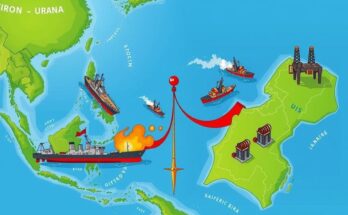Burundi is characterized by its official languages, Kirundi, French, and Swahili, and its significant Christian population. The hilly terrain affects settlement patterns, contributing to ethnic conflict. Agriculture underpins the economy, primarily driven by coffee exports. Despite potential tourism opportunities, ongoing civil unrest limits economic and social stability.
Burundi recognizes three official languages: Kirundi, crucial as the primary means of communication, French, and Swahili. While Kirundi is a unifying Bantu language spoken predominantly by the Hutu and Tutsi populations, French and Swahili are prevalent in urban centers, particularly in Bujumbura, reflecting the country’s diverse linguistic landscape. This shared language underscores a rare linguistic unity in sub-Saharan Africa.
Christianity dominates the religious landscape with approximately 60% of the population identifying as Roman Catholic and over 12% as Protestant. Traditional beliefs still hold significant influence among many Catholics. Muslims represent a small fraction of the populace. Strained relations between church and state, rooted in ethnic tension, have persisted since the 1970s, complicating the church’s role amidst the country’s political crises.
Burundi’s hilly terrain has influenced settlement patterns, resulting in dispersed family compounds that discourage community cohesion. This geographical feature contributes to ongoing ethnic disputes, particularly between Hutu and Tutsi populations. Despite a high population density, urban centers remain scarce, with Bujumbura as the notable exception, situated along Lake Tanganyika’s northern edge.
Civil unrest since the 1990s has displaced thousands, leading to the establishment of refugee camps, while simultaneously introducing Rwandan refugees due to the genocide in their homeland. These camps primarily house women and children, reflecting the human cost of political turmoil in the region. Uniquely, these dynamics contribute to Burundi’s demographic complexities.
High birth and growth rates characterize Burundi, with a notable portion of the population under the age of 15. While life expectancy is low globally, it aligns with the African average. Food security remains a challenge due to prevailing poverty levels affecting over 60% of the populace, exacerbated by historical conflicts and economic struggles.
Agriculture serves as the backbone of the Burundian economy, with coffee, particularly arabica, as the leading export and foreign exchange resource. Other cash crops like cotton and tea are cultivated, but poverty and dependency on foreign aid hinder economic progress. Past sanctions due to political instability impeded trade, though some recovery efforts have yielded slow improvements.
Approximately 50% of Burundi’s land is arable, with staple crops including beans, corn, and cassava. Although coffee production suffered in the 1990s due to unrest, it has seen a rebound. Livestock farming faces challenges from overgrazing, and reforestation efforts have not sufficiently countered the diminished forest cover.
Burundi possesses unexplored mineral resources, including nickel and possible oil reserves. Though mineral production is limited primarily to tantalum, gold, and tin, local fuel sources largely rely on peat and firewood. Electricity generation is primarily hydroelectric, with some imports supplementing energy needs.
Manufacturing in Burundi remains limited to small-scale operations mainly based in Bujumbura, encompassing breweries and textile production. Despite adverse conditions from civil unrest, there remains governmental commitment to support industrial growth. This sector’s future will depend on stable socio-economic conditions.
The Banque de la République du Burundi serves as the central banking institution, overseeing the country’s currency and banking operations amid growing trade deficits and foreign dependency. Key imports include food products and capital goods while coffee and tea form the majority of exports. Trade partners are diverse, with China, UAE, and India being prominent players in Burundi’s economic network.
Despite possessing considerable tourism potential, ongoing conflicts have severely restricted visitor access to Burundi, hindering economic diversification attempts. Developing this sector could provide significant benefits, requiring stability and investment.
The article offers an in-depth exploration of Burundi, focusing on its official languages, religious demographics, settlement patterns, and economic conditions. It highlights the linguistic unity among the Hutu and Tutsi populations despite historical ethnic tensions. The effects of civil unrest on demographics, along with the critical role of agriculture in the economy, are also closely examined, framing Burundi’s socio-political and economic context in relation to its regional history and challenges.
In conclusion, Burundi presents a complex interplay of linguistic unity, religious diversity, and socio-economic challenges exacerbated by historical conflicts. The nation’s reliance on agriculture and its precarious economic situation highlight the urgent need for stability and growth. Enhancing tourism and addressing demographic disparities may foster recovery in this densely populated yet isolated nation.
Original Source: www.britannica.com




